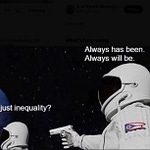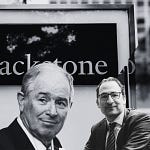We were honored to speak with Jeff Fong (National Board Member) and Laura Foote (Founding Executive Director) of YIMBY Action, a 501(c)(4) political advocacy organization built around a simple thesis: the housing crisis is caused by bad rules, not fate, and changing those rules requires organized, disciplined pro-housing voters.
From our vantage point, this conversation provided a convincing, clear-eyed articulation of YIMBYism as a serious governing project rather than some internet mood. “We’re a single issue organization. We are addressing the housing shortage,” says Laura.
Our discussion also helped clarify the terms of engagement with YIMBY critics, some of whom we’ve previously engaged with (namely Cameron Murray). Rather than promising an instant rent collapse or a “market clears everything, period”-style narrative, Laura and Jeff advance a narrower, testable goal: a world where people are not spending more than ~30% of income on housing, where added density in valuable locations makes homes better, larger, and more numerous — even if San Francisco never becomes “cheap.”
We thank Jeff and Laura for enthusiastically engaging with us in this highly substantive conversation, and invite our readers to check out both of their respective Substack publications:
(00:00–02:30) From “Crisis” to Shortage: Why YIMBY Exists
Frames housing not as a fuzzy “crisis” but as a concrete, nationwide shortage that manifests as homelessness, mega-commutes, overcrowding, and delayed adulthood — failures of policy, not character.
Introduces YIMBY Action as a single-issue, pro-housing movement with dozens of chapters organized around one metric: reducing the housing cost burden so people aren’t spending 30%+ of income on shelter.
Emphasizes that the endgame is obsolescence: if abundant housing exists, the organization’s work is done.
(02:30–08:30) The “Net” Around Housing: How We Built the Shortage
Describes modern land-use as a “giant net” of rules — zoning, historic districts, parking mandates, endless hearings — each thread locally rationalized, collectively suffocating new homes.
Traces how ostensibly race-neutral zoning emerged as a workaround to fair housing law, blocking apartments as a proxy for excluding disfavored groups.
Shows how incremental “tap the brakes” reforms of the 60s–80s, plus homeowner desire for rising values, compounded into today’s chronic underbuilding.
(08:30–15:30) Shortage Everywhere, Pressure Points Somewhere
Rejects the clean binary of “national shortage” vs “spatial misallocation,” arguing the net exists almost everywhere; pain spikes where growth hits the tightest mesh.
Highlights that even slow-growth towns — like the small-town Maine example — have quietly priced out workers and students by freezing multifamily construction, turning core neighborhoods into second-home reserves.
Stresses that building “4 million homes in the middle of Kansas” solves nothing; supply must be allowed where opportunity, wages, and demand are.
(15:30–24:30) Hyper-Local Gatekeeping and the Culture of Hissing
Explores “hyperlocalism” as a non-statutory veto: hearings and procedures normalize opposition as a civic duty while supporters get hissed at — literally — out of the room.
Argues that law and culture are entwined: process-heavy rules train communities to treat obstruction as virtue, so reform must flip the social script on NIMBYism.
Offers a glimpse of cultural turning: longtime opponents now worry they’re seen as antisocial — evidence that norms are shifting.
(24:30–33:30) Housing, Life Chances, and the “Deterministic” Trap
Connects housing costs to marriage, divorce, safety, and fertility through unsentimental personal anecdotes: staying in bad arrangements or delaying kids because there’s nowhere affordable to go.
Pushes back on bloodless “the market clears” narratives; emphasizes that constrained choice under high rents is still constraint, not revealed preference.
Notes that many would raise families in cities if they could buy or rent adequate space there; current patterns reflect distorted economics more than timeless suburban yearning.
(27:30–33:30) What Counts as a YIMBY Win?
Defines success less as “making San Francisco cheap” and more as making high-opportunity places flexible, modern, and abundant enough that people can secure decent space at sustainable cost shares.
Rejects the straw man that deregulation produces instant rent collapse; instead focuses on future-proofing: when the next demand shock hits, supply should be able to respond quickly.
Centers on a simple target: no one should be locked into poverty or bad situations because every additional unit was procedurally strangled.
(33:30–42:30) Winners, Losers, and the Murray “Symmetry” Debate
Engages the Cameron Murray thesis that housing policy is a zero-sum tug-of-war; concedes partial truth but calls the framing overstated.
Reframes the “losses” from YIMBY reforms as marginal comforts — free street parking, purity of single-family streetscapes — rather than expropriation of real value.
Underscores an underappreciated empirical point: adding multifamily near single-family homes does not reliably depress values; broad upzoning often raises option values while easing costs for newcomers.
Argues that if abundance yields more residents, higher incomes, and thicker local economies, treating that as a policy failure is perverse.
(42:30–53:30) How YIMBY Action Actually Fights: Building the Pro-Housing Parade
Presents YIMBY Action as a disciplined political machine: local chapters backing individual projects, turning up at hearings, and rewarding pro-housing votes with visible, organized support.
Uses public questionnaires, endorsements, and online amplification to lock politicians into consistent, on-record pro-housing positions that predict real votes.
Describes a “multi-jurisdictional” strategy modeled on effective advocacy groups: local organizing, state-level enforcement (via YIMBY Law), and credible legal threats to ensure reforms translate into actual units.
(47:30–56:30) Beyond Zoning Tweaks: Finance, Innovation, and the End of Zoning
Treats classic fights — ADUs, minimum lot sizes, permit shot clocks, inclusionary zoning tweaks — as necessary but not sufficient: the “minimum viable product” for a sane system.
Highlights emerging models: public land leasing, “reverse inclusionary” strategies where public entities build some market-rate to cross-subsidize affordability, and serious modular housing at scale.
Articulates the long-run vision: housing approvals by-right, health-and-safety codes without discretionary veto points, pre-approved designs, and a regulatory environment that trusts human ingenuity to solve infrastructure and form.
(56:30–1:04:00) 2035 and After: A Post-Shortage Political Economy
Forecasts the next decade as a fight to rewire federal incentives (e.g., “ROAD to Housing”–style reforms) so dollars and permits flow toward jurisdictions that actually permit housing.
Envisions a durable cultural realignment where being pro-housing is the default for serious politicians, and movements like YIMBY Action and Strong Towns normalize growth, infill, and mixed-use as ordinary governance, not radicalism.
Ends on a deliberately optimistic thesis: once the artificial “net” is cut, people will re-sort toward opportunity, distressed cities can reinvent on the back of lower costs, and innovation in how and where housing is built can finally catch up with economic reality.
Overarching takeaways
The housing shortage is deliberate, not mysterious. The core problem is a dense “net” of local rules—zoning, hearings, parking mandates, design review, historic overlays — that collectively throttle new homes in the very places where people most need and want to live. Shortage is a policy equilibrium, not a natural disaster.
Abundance has to be where opportunity is. Building millions of units in low-opportunity regions is a statistical fix, not a real one. A serious housing agenda means legalizing apartments, infill, and mixed-use in job-rich metros and legacy neighborhoods that have spent decades exporting their workers and importing their commuters.
The veto is as powerful as the code. Hyper-local process — the endless meetings, appeals, and social sanctioning of “rude” supporters — functions as a shadow zoning code. Reform isn’t just about changing text; it’s about dismantling procedural veto points and making “yes” the default, not the heroic exception.
NIMBYism’s losses are mostly fake; the shortage’s losses are real. Pro-housing reforms may marginally dent aesthetic preferences or the illusion of guaranteed parking, but the status quo imposes tangible costs: overcrowding, forced mega-commutes, delayed family formation, diminished mobility, and exclusion from high-opportunity cities.
Cultural change is a policy instrument. Treating “I don’t want renters here” or “no apartments near me” as socially discrediting, not civic-minded, is part of the work. A functioning pro-housing coalition makes obstruction feel parochial and abundance feel like common sense.
YIMBY is a political technology, not a vibe. The path forward runs through hardball organizing: ratings, endorsements, turnout operations, legal enforcement of state laws, and a standing pro-housing constituency that politicians fear disappointing. The test of success is simple: when adding homes is boring, by-right, and routine — and movements like this can happily put themselves out of business.




















